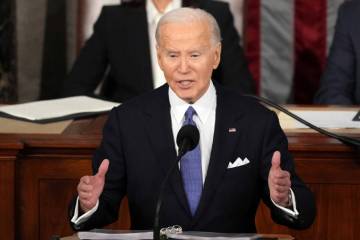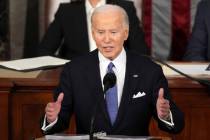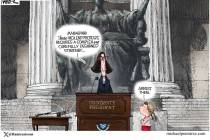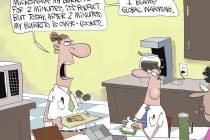COMMENTARY: Independent physician practices are disappearing, and that’s bad for patients
Corporate juggernauts are coming to dominate the U.S. health care system.
UnitedHealth now employs 10 percent of all physicians in the United States. Hospitals signed up more than 58,000 new physician employees and acquired nearly 5,000 private practices between 2019 and the end of 2021. Amazon and CVS are investing heavily in adding doctors to their payrolls.
The gradual disappearance of independent physician practices is not in the best interest of patients. Policymakers must ensure that our health care system does not discriminate against independent practices — and unwittingly put them out of business.
The health care market has been slowly consolidating for decades. As of 2021, more than half of doctors worked for hospitals or health systems, according to research by Avalere Health for the Physicians Advocacy Institute. All told, nearly three-quarters of physicians work for corporate entities. Forty years ago, by contrast, roughly three-quarters of physicians worked in their own medical practices.
The causes of this consolidation are many. For hospitals and health systems, moving doctors in-house can boost referrals to other parts of the system — and thereby increase revenue. For doctors leaving private practice, employment can mean steadier pay, a larger corporate infrastructure to offer administrative support and new patient referrals.
But independent practice offers patients and the health care system many benefits. Patients who receive care at independent practices often post better health outcomes. That makes intuitive sense. Independent physicians have a strong incentive to build trust and forge relationships with their patients. Their patients report higher levels of satisfaction.
One study from researchers at Harvard found that the differences in performance between health system-affiliated and non-system physicians were small. But health systems charged much higher prices for physician services — in some cases more than 25 percent more.
Administrators of health care behemoths claim that consolidation allows for more efficient and cost-effective treatment for patients. But by buying up their competitors, hospitals and health systems have gained the market power to command higher prices. With fewer independent practices to foster competition, big health care systems have less incentive to deliver the higher-quality, lower-cost care they promise.
There are ways policymakers can ensure the viability of independent practices — and bring about a competitive marketplace that works to the advantage of patients.
First, Congress can fix the formula Medicare uses to pay doctors. Medicare reimbursement for physician services declined 3.37 percent at the beginning of this year. A new spending bill just signed into law by President Joe Biden offsets a portion of that cut — but that’s not enough. When adjusted for inflation, Medicare reimbursement for physicians has sunk 30 percent since 2001.
Independent physicians’ costs haven’t decreased during that period. The cost of running a practice is up nearly 50 percent. But Medicare reimbursement for hospitals have increased with inflation since 2001.
The combination of pay cuts, increased costs and Medicare’s structural bias in favor of hospitals makes it harder for independent physicians to compete. Independent doctors deserve a level playing field.
Congress has blunted cuts to Medicare reimbursement in each of the past four years. But a pay cut is still a pay cut. An annual band-aid is insufficient. A longer-term solution is needed. Some lawmakers recognize as much.
This year, six senators — three Republicans and three Democrats, including Nevada Sen. Catherine Cortez Masto — announced that they would work on legislation that would “make changes to the current Medicare physician payment system to ensure financial stability for providers, improve patient outcomes, promote access to quality care and incentivize the utilization of emerging health care technology.” We support these objectives.
In the House, a bipartisan group of 82 members has endorsed a measure that would index physician pay under Medicare to inflation.
Approaches such as these would help ensure that independent physician practices can continue to provide the high-quality, cost-efficient care patients are looking for — and push back against the broader consolidation trend that has taken hold in the market.
Dr. Paul Berggreen is board chair and president of the American Independent Medical Practice Association. He is also a gastroenterologist in Phoenix.




























